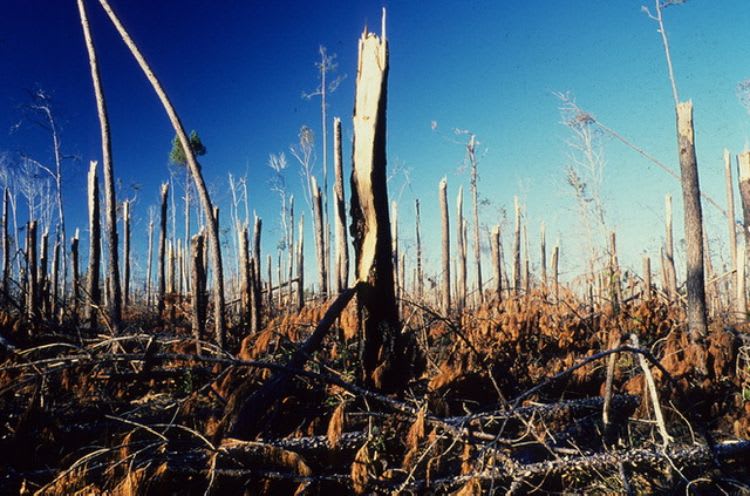We are occasionally asked to design bridges in forested areas where there is a possibility for a tree or large branch to fall onto the bridge (e.g. nature walks, golf courses, etc.).
It is not a load case that is spelled out in any of the bridge design codes (as far as I'm aware).
For bridges on the slender side, e.g. a steel pedestrian bridge, I would imagine that a falling tree could easily cause it to collapse.
But as for estimating the collision load from a tree? I'm not really sure at all.
In AS5100, there is a 'minimum restraint load' case, consisting of a 500 kN load (sometimes 200 kN for pedestrian bridges), which is applied horizontally at the bridge supports and is mainly intended to provide a minimum level of robustness to bridge and avoid the superstructure becoming dislodged. Possibly it would be a case of taking a similar nominal collision force and applying it at any point along the bridge, at any angle between horizontal and downward? For a pedestrian bridge with steel railings, I doubt that it would be feasible to design the railings to take such a load, so possibly it would just need to be applied to the main structural members?
Curious to hear people's thoughts/experience.
It is not a load case that is spelled out in any of the bridge design codes (as far as I'm aware).
For bridges on the slender side, e.g. a steel pedestrian bridge, I would imagine that a falling tree could easily cause it to collapse.
But as for estimating the collision load from a tree? I'm not really sure at all.
In AS5100, there is a 'minimum restraint load' case, consisting of a 500 kN load (sometimes 200 kN for pedestrian bridges), which is applied horizontally at the bridge supports and is mainly intended to provide a minimum level of robustness to bridge and avoid the superstructure becoming dislodged. Possibly it would be a case of taking a similar nominal collision force and applying it at any point along the bridge, at any angle between horizontal and downward? For a pedestrian bridge with steel railings, I doubt that it would be feasible to design the railings to take such a load, so possibly it would just need to be applied to the main structural members?
Curious to hear people's thoughts/experience.

